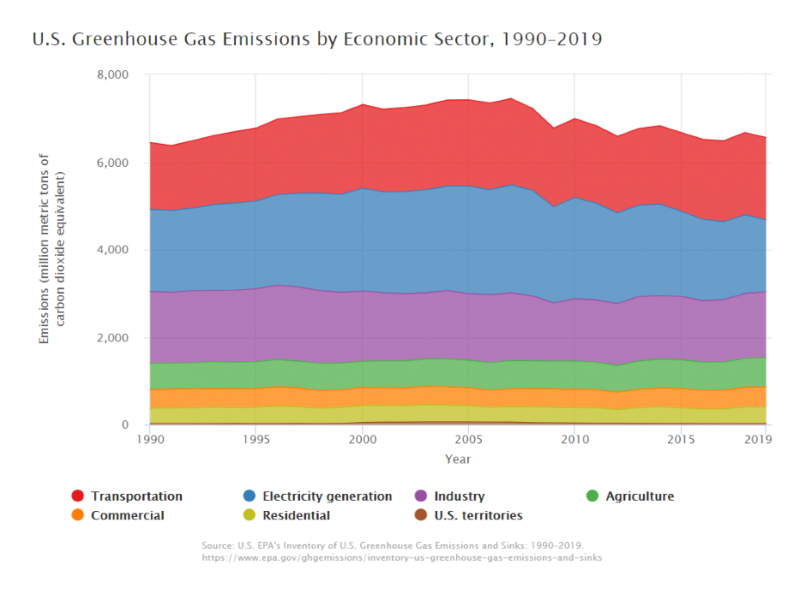
The U.S. Environmental Protection Agency (EPA) released its 28th annual Inventory of U.S. Greenhouse Gas Emissions and Sinks (GHG Inventory), which presents a national-level overview of annual greenhouse gas emissions from 1990 to 2019. Net U.S. greenhouse gas emissions were 5,769 million metric tons of carbon dioxide equivalent in 2019, a 1.7 percent decrease in emissions between 2018 and 2019. While many long-term and short-term factors influence annual greenhouse gas emissions in recent years, the downward GHG emissions trend can be largely attributed to falling emissions in the electric power sector.
The GHG Inventory covers seven key greenhouse gases: carbon dioxide, methane, nitrous oxide, hydrofluorocarbons, perfluorocarbons, sulphur hexafluoride, and nitrogen trifluoride. In addition to tracking U.S. greenhouse gas emissions, the inventory also calculates carbon dioxide that is removed from the atmosphere through the uptake of carbon in forests and other vegetation.
This impartial, policy neutral report, has been compiled annually since 1993 and submitted to the United Nations Framework Convention on Climate Change. The report is prepared by EPA in collaboration with numerous experts from other federal agencies, state government authorities, research and academic institutions, and industry associations. Under the United Nations Framework Convention on Climate Change (UNFCCC), national inventories for UNFCCC Annex I parties should be provided to the UNFCCC Secretariat each year by April 15.
Overview of Greenhouse Gases and Sources of Emissions
Key findings from the 1990-2019 U.S. Inventory include:
In 2019, U.S. greenhouse gas emissions totaled 6,558 million metric tons of carbon dioxide equivalents, or 5,769 million metric tons of carbon dioxide equivalents after accounting for sequestration from the land sector.
Emissions decreased from 2018 to 2019 by 1.7 percent (after accounting for sequestration from the land sector). This decrease was driven largely by a decrease in emissions from fossil fuel combustion resulting from a decrease in total energy use in 2019 compared to 2018 and a continued shift from coal to natural gas and renewables in the electric power sector.
Greenhouse gas emissions in 2019 (after accounting for sequestration from the land sector) were 13 percent below 2005 levels.










